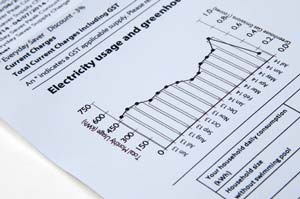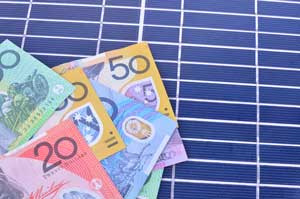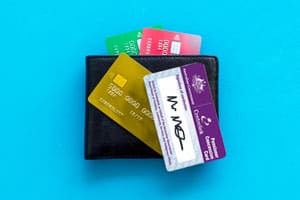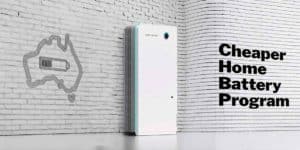Comparing solar plans

Energy Saving Guide

How to find the best electricity deal for solar.
In this guide, we’ll unpack the essential considerations for solar owners that are serious about finding the best electricity plan.
There’s a wealth of information online about how to go about getting the right solar set up. But, there’s not much written about how to find the best electricity plan for solar to maximise your savings. Choosing the right retailer and plan for your situation could make a difference of hundreds of dollars each year. Of course, generating your electricity means you’ll have much smaller bills while enjoying greater independence. Some may even be receiving bill credits.
However, that doesn’t mean that solar owners are immune from the many dud deals out there.
The formula to get it right
Electricity retailers have made comparing offers a complicated science. Add solar into the mix, and there are even more variables. Many households get excited about chasing the biggest feed-in tariffs (FITs) but don’t investigate inflated pricing on the rest of these deal. Or a bunch of tricky conditions. The new Default Market Offer won’t do much to help solar owners because feed-in tariffs are not part of the calculation. While the over-inflated discounts of the past are gone, thanks to the new reference price, the new pricing rules don’t address solar at all.
Top ten electricity comparison tips for solar owners
So how can you be confident you’ve got it right? Conduct an independent and thorough comparison. Then use the total cost for your unique usage and solar export when applied to each deals pricing, discounts, feed-in tariffs, restrictions and conditions. This way you can compare side-by-side. WATTever’s comprehensive electricity comparison does exactly this to support solar owners find the cheapest deal for their household.
Here’s what to look for;
- Compare the WHOLE market
- Know how much electricity you use and export
- Value your solar properly
- Check the fine print
- Keep an eye on your plan prices
- Mind the exit charges
- Ensure your concessions count
- You can get value AND good values
- Discover arbitrage opportunities
1. Compare the WHOLE market
Shopping around and actively checking a broad range of offers is essential to find the best electricity deal for solar. Why wouldn’t you want to know what every retailer had to offer? It’s a philosophy that WATTever lives every day. That’s why we compare every retailer and every publicly listed residential and small business plan. Making it simple to review all the retailers in one place.

2. Know how much electricity you use and export
We strongly recommend grabbing a recent bill to input your specific usage and solar export. This way you can obtain the most accurate cost estimatefor your situation. Ideally, tallying 12 months bills or averaging a summer and winter bill (as a shortcut) will balance the seasonal highs and lows typical for solar export and household energy use. That’s because in summer when solar export is pumping and grid use is low, high feed-in tariff plans look attractive despite their inflated grid rates. In winter, when solar production really falls off, with lower export and much more grid use, then competitive grid rate plans with moderate feed-in payments typically win out. By keeping this in mind, you can find the all-around winner.
When you have a bill handy, then you can select the right tariff based on the charges on the current bill. (Anytime is a single rate, Time of Use has two or three periods, while Demand Tariffs have an extra Demand charge for the monthly peak. Understanding your tariff will help you to find the best deal for your situation. You can find out more here
WATTever asks more questions than other comparison services so that we can offer solar owners a complete estimate. You’ll find questions on tariff type and solar PV size. Plus prompts if you have premium feed-in tariffs or if you are eligible for concessions and more. After all, there’s no point wasting time on plans with eligibility criteria that don’t match your situation.
If you’ve recently installed solar or are thinking of installing solar, then WATTever’s Add Solar Calculator will rank solar plans for your situation. It’s a great tool if you don’t yet know how energy much you’ll export or self-consume. The calculator uses average PV WATTs generated by households in your state and allows you to dial up system size and choose the level of self-consumption. As a result, you’ll see solar plans that work best for you.

3. Value your solar properly
If you’re after the best electricity deal for solar, you’ll want to select the plan that will provide you with the lowest bill. It’s important to state this – it may not necessarily be the plan with the greatest feed-in tariff that will be cheapest offer your place. Sure, plans with comparatively high feed-in rates attract a lot of attention. However, you’ll soon discover that big feed-in tariffs often come with some rather special pricing for solar owners. Special pricing like much higher daily supply charges, inflated energy usage costs and a bunch of limits on what they’ll pay for your solar. It’s all part of the retailers pricing games.
Tricky deals unmasked
WATTever calculates the total cost for your situation. We factoring usage and daily supply charges for your usage plus feed-in tariffs for your level of solar export including stepped FITs. As a result, it’s easy to check whether that big feed-in tariff plan will leave you better off or not. On the ranking page, roll over the estimated dollar amount to see the value of your exports on any plan.

4. Check system eligibility and stepped FITs
You’ll discover some unique fine print on electricity plans around solar. When you use our comparison, we ask a question about the size of your solar set up. This ensures we only display solar plans that are available for your situation.
Many plans have have a stepped feed-in tariff on solar exports. We factor this into the cost calculation for these plans. You can quickly check the conditions on the plans details page. If the plan has a big feed-in tariff expect they’ll be some conditions and limits! Here are three watch-outs that come up a lot, that savvy shoppers should be aware of;
1. PV system size limits.
Some plans restrict the size of eligible systems. If you have a system over 5kW or 10kW, then this can be an issue. We do get asked what might happen if a customer understates their system size when applying to the retailer so that they can qualify for a plan. The thing to remember is, retailers have access to data held by the network that registers the size and details of the PV system at your address. The retailer can reject your application at the outset. Or, you may find your bill adjusted down the track – bumping you to an eligible plan with an adjustment in the retailer’s favour. High export levels that are unfeasible for an eligible PV size may trigger the retailer to verify things.
2. Stepped feed-in tariffs.
Big FIT plans offered by many retailers often have a cap on the amount of solar export they’ll cover at the headline feed-in tariff. This cap is typically a daily limit (usually around 10-14kWh. After this the feed-in tariff steps down to a much lower rate. It can be a problem if you are exporting a lot of power and are banking on getting paid for all of it. Other plans offer a high feed-in rate for the benefit period. All in all, these are conditions that should be checked out. WATTever comparison calculates for any stepped feed-in tariff to help you find the best deal.
3. Exclusive rates for Retailer installed systems.
In the conditions of some plans, you’ll find the requirement to have a Retailer installed system to receive their highest feed-in tariff. For example, unless you had Origin Energy install your solar set up, you won’t be eligible to sign up to their Solar Boost Plus plan. If only we had a dollar for every time someone asked about this one.

5. Key an eye on your plan prices
The level of savings you can make over time on a plan will be impacted by the price changes. What was once a great deal can drift away into another expensive utility bill. The ACCC found that consumers who don’t regularly shop around for a competitive deal experience higher prices. They raised a concern that the market isn’t delivering for customers who don’t regularly switch or engage with their existing retailer. Sure, Solar owners are less impacted by price charges because they buy less grid energy. However, they are not immune from overpriced plans
We recommend that every household compare their energy plan at least once year to make sure it’s still competitive. The right time is when your rates change. For most households this typically happens around August in Victoria and in July for everywhere else. Wait for the dust to settle and review the range of new offers to check to see if your rates are still fair.
The negotiation table
You can ask your retailer to put you on their best deal. In fact, retailers in Victoria are required to let customers know at least every three months if they have a cheaper deal available. Retailers have some discretion to respond to customers that ask to have their current plan match competitive offers. They can offer improved discount rates and, in some cases, we’re seeing retailers offering improved solar feed-in tariffs.

6. Get more from a Premium FIT
If you currently receive a state government premium feed-in tariff, you’ll want to see this included the calculation. (Sorry, these schemes are closed to new customers). Be aware that while some retailers add their provider feed-in tariff on top – others don’t. Savvy solar owners on these schemes will benefit by shopping around to double-dip on their FIT and boost their annual credits

7. Mind the exit and miscellaneous charges
One practice we have seen is retailers holding on to solar credits from departing customers. If you’ve built up a large credit balance with a retailer – you’ll want to manage this, before you switch.
Thankfully, general exit fees are gone. However, plan fees for credit cards and paper bills can add up over time. You can check out a summary on extra charges retailers publish on their energy fact sheets here. Not every retailer includes this information on their fact sheets, so you may need to get deeper into their terms and conditions.

8. Ensure your concessions count

9. You can get value AND good values
Some solar owner like to consider the values of a retailer. It’s very possible to find good value deals from companies with values you support. Are they a progressive company actively supporting renewables? How do they treat solar customers? The Green Electricity Guide developed by Greenpeace and The Total Environment Centre is a simple rating system that cuts through the greenwash. It ranks retailers support of renewables and renewable customers. You’ll find Green Electricity Guide star ratings on our comparison.

10. Discover arbitrage opportunities
With a battery in your solar set up, you can generate further savings (or even income). There is an added opportunity to select plans where electricity can be bought from the grid and then sold back at a higher price by managing your import and export. Our Solar Arbitrage article includes an up to date list of plans that can support this strategy. Plus, an outline of how the strategy works.











